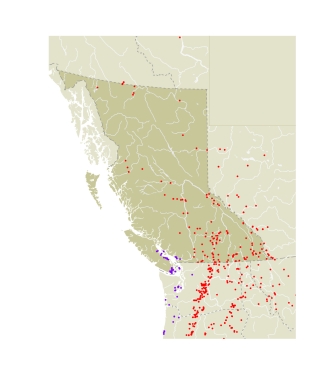Most individuals are seen flying from early May to early June. In anyone season, the Western Pine Elfin emerges later than other Incisalia species. Adults take nectar from Salix prolixa. Eggs laid on 24 May at the base of needles of the larval foodplant, Pinus contorta, hatched on 1 June (Hardy 1959a). Young larvae fed on the base of the pine needles, eating through the needle, which dropped off. Later instars fed on the surface of needles. By 20 July the larvae were mature and pupated in the lab among debris at the bottom of the breeding cage. The adults emerged on 26-28 March the following year. The Forest Insect Survey has also reared the Western Pine Elfin from P. ponderosa and P. monticola.
|
|
